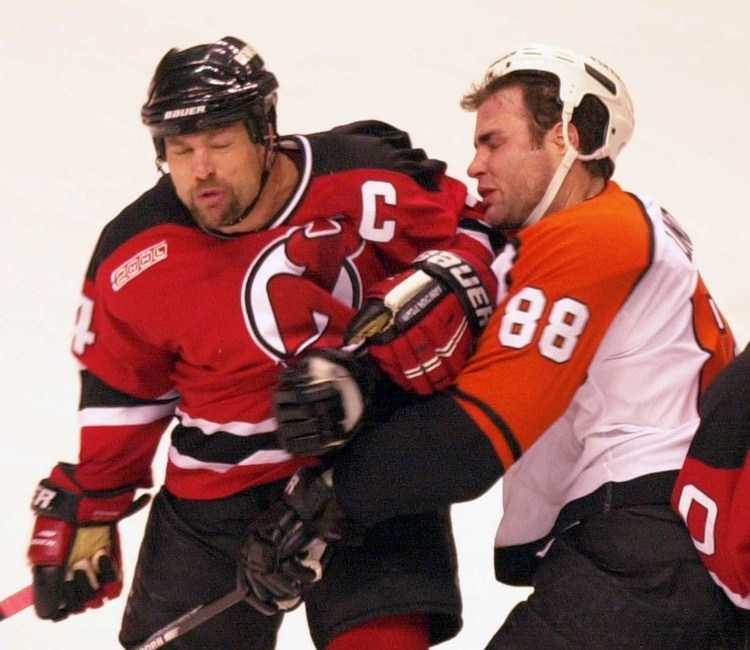
All Habs Hockey Magazine is proud to provide a platform for young guest writers to express their views on important issues. Today, we present the second of a three-part series on fighting in hockey. Your comments are welcome.
Sean Perrun was born and raised in Winnipeg, Manitoba. He has been a Jets fan and a Canadiens fan for as long as he can remember. Some of his fondest memories are of his dad taking him down to the old Winnipeg Arena for Jets games. He was just ten years old when the team packed up for Phoenix, but he still donated his life savings, a whopping $10, to the ‘Save the Jets’ campaign. When the Jets left, he felt that they took a part of the soul of Winnipeg with them, leaving a void in the city that could only be filled with their return. Now that they are back, Sean tries to take in as many games as possible, and to be part of the great atmosphere at MTS Centre.
Part 2: Facts on concussions. Should the NHL take more responsibility?
By Sean Perrun, Special to All Habs Hockey Magazine
WINNIPEG, MB. — Arguably the most famous of all the sports injuries is the concussion. It has ended the careers of many hockey players in the past and will continue to do so well into the future whether fighting is eliminated or not. There are many ways that a player can sustain a concussion, one of which is fighting. The other ways are numerous and can include being struck in the head by pucks, glass, ice, body parts, sticks and other such things that are as much a part of the game as fighting is.

Perhaps one of the more famous instances of a player having his career cut short due to a concussion is that of Eric Lindros when Scott Stevens caught him with his head down in the playoffs of 2000. The blow was menacing and, contrary to what Brad Kurtzberg would have you believe in an article titled The 50 Most Gruesome Injuries in Hockey History, was entirely legal. Review of the video shows that Lindros was skating with his head down coming over the blue line and Stevens hit him with the shoulder incidentally in the head. The elbow and forearm of Stevens did come up a bit, but it is the result of follow through and not an elbow to the head, as Mr. Kurtzberg presented.
According to the NHL Concussion Study, the majority of concussions come from legal hits, like the Stevens-Lindros hit. The study compiled the 80 concussions suffered by players in the 2010-11 season, in point form, showing how each concussion occurred. The numbers broke down as follows (please note that four of the concussion registered that year (five per cent) are not accounted for on this chart because they were not discovered until later):
- Accidental, 26%: This includes hits from teammates, pucks, tripping, and most significantly, inadvertent collisions between opponents. Notably, the accidental concussion is what Sidney Crosby suffered during the Winter Classic. At 26 per cent for 2010-11, this number doubled from accidental hits suffered in 2009-10.
- Fighting, 8%
- Legal, 44% : This includes hits to the body and hits to the head that did not warrant penalties.
- Illegal, 17%. Primarily blindside hits to the head, but also includes other prohibited hits to the head and body. Clearly, illegal hits are distinguished from legal hits in that they are punishable, either by penalty or supplemental discipline.
Fighting accounts for only eight per cent, or six concussions on the season, compared against 44 per cent of concussions suffered coming from legal hits. When accidental and legal hits make up 70 per cent of concussions in a season, it is safe to say the numbers tell us that hockey is a violent and dangerous game. Although the wish to eliminate six concussions a year is laudable, eliminating fighting in hockey will make virtually no difference to the total number of concussions on any given year. And let’s face it; the league should be looking at the highest percentage rate and how to bring that down, as opposed to the lowest percentage rate.

In a recent game against the Colorado Avalanche, Winnipeg Jets defenseman Mark Stuart was hit from behind by Gabriel Landeskog. Stuart laid on the ice for a few seconds as he tried to shake off the violent blow that crushed his head between Landeskog and the boards. In what could have been ranked among the top dirty hits of the season thus far, only a minor penalty was given. No doubt that plays of the like will continue to be swept under the proverbial rug as the season moves along, with players like Stuart (whose bruise, which could be seen forming just minutes after the hit, encompassed nearly half his face) receiving no justice but that which they take for themselves.
Perhaps more blame should be placed on the league for failing to bring justice down upon irresponsible players. If the league took a more active role in punishment, such as fines and suspensions for all dirty hits, more injuries could be eliminated and prevented thus making the league a safer place. Perhaps this action could be responsible for not only reducing the number of fights in a season, but moreover, some of the brutal violence seen game in and game out. In the end, I believe it will be the reduction the violence, not the elimination of fighting that will reduce the number of injuries like concussions in the league.
Check back on Tuesday for part three where we examine risk.
Did you miss part one of the series? You can find it here: Fighting in Hockey, Does it Belong? Part 1: Violence
Sources:
*Wikipedia — http://en.wikipedia.org/wiki/Marty_McSorley#Assault_incident
*Wikipedia — http://en.wikipedia.org/wiki/Dino_Ciccarelli#Controversy
***http://dropyourgloves.com/fights/LeagueSeason.aspx?League=1&Season=2012
Additional sources from articles and interviews by TSN, CBC, SportsNet, SB Nation/Rawcharge, The Winnipeg Free Press and RBNonline.ca